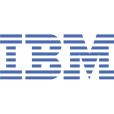 IBM (NYSE: IBM) and the University of Pittsburgh Medical Center (UPMC) today announced that the medical center's deployment of IBM virtualization technologies is saving significant IT infrastructure costs and improving productivity, while maintaining high service levels. Virtualization allows customers to increase efficiency by dividing a server into smaller parts or by pooling smaller, individual machines so they can perform as one larger system.
IBM (NYSE: IBM) and the University of Pittsburgh Medical Center (UPMC) today announced that the medical center's deployment of IBM virtualization technologies is saving significant IT infrastructure costs and improving productivity, while maintaining high service levels. Virtualization allows customers to increase efficiency by dividing a server into smaller parts or by pooling smaller, individual machines so they can perform as one larger system.UPMC, a $6 billion integrated health care enterprise, is the largest employer in western Pennsylvania and one of the most renowned academic medical centers in the United States. With 43,000 employees, it comprises 19 hospitals, a network of other care sites, an insurance division, and international and commercial ventures. The IBM virtualization effort is enabling UPMC to accelerate the implementation of its electronic health record system across its extensive network while developing more powerful clinical tools to enhance patient care.
UPMC is a national leader in implementing electronic medical records. The large amount of information generated by these systems requires a powerful, flexible IT infrastructure and an enterprise-wide approach to effectively manage storage, computers, memory, network bandwidth and disk input/output. As a result, UPMC is in the process of replacing HP and Sun Microsystems technology with IBM to create an on-demand data center. UPMC's new data center includes IBM servers, storage and software that feature industry-leading virtualization technology to consolidate and simplify the management of its IT infrastructure.
"Virtualization isn't an option, it's a necessity," said Paul Sikora, vice president of IT Transformation at UPMC. "Considering that IBM and UPMC are only midway through this transformation project, the results have been impressive. We have already proven that standardization, along with aggressive implementation of virtualization, yields unprecedented productivity and efficiency."
In the last five months, UPMC has begun to use the virtualization capabilities built into IBM's AIX operating system. As a result, the same staff is supporting 150 percent more server capacity, while the amount of space required for the servers has been reduced by almost 40 percent. This was made possible by standardizing on IBM hardware and operating system and fully utilizing IBM's and VMware's virtualization technology.
In the first of a four-phase benchmarking study commissioned by UPMC, Health Industry Insights, an IDC company, estimated that savings already identified in the IT transformation project will conservatively range from $18 million to $22 million over the next three years. That includes costs avoided for new hardware, maintenance, floor space and staffing.
"As the enabling technologies mature, server virtualization is rapidly moving from leading edge to mainstream in many industries. But in health care, there are still very few cases of successful early adoption on the scale of UPMC's effort," said Marc Holland, Health Industry Insights program director of provider IT research. "We believe that there are significant economic benefits to be achieved from virtualization, and this landmark effort is one that other provider organizations should closely monitor."
"Companies are continuously evolving, and we are constantly striving to provide our customers with the most innovative technology to meet business needs," said Rich Lechner, vice president, virtualization at IBM. "UPMC is a prime example, leveraging IBM's virtualization technology to deliver innovation that matters to quickly adapt to a changing market, provide high availability for every application and save administration time. UPMC's experience is a testament to the business benefits that can be achieved through the implementation of a virtualized, dynamic infrastructure."
UPMC is using IBM virtualized servers and storage, as well as IBM management tools to help simplify the management of the total infrastructure. The most recent virtualization deployment is on UPMC's UNIX systems. The UNIX applications were migrated to AIX and standardized on four IBM System p5 595 servers. To accommodate the new application for outpatient electronic health records and stay within budget constraints, UPMC used IBM's Advanced POWER Virtualization (APV) for the majority of its System p5 servers to more effectively utilize the available processors. APV allows micro-partitioning to share adjustable fractions of a CPU across partitions, as well as a dynamic load distribution across the CPUs and memory.
For its Intel-based servers, UPMC will deploy VMware's Virtual Infrastructure 3 to consolidate more than a thousand physical servers to just 20 IBM System x servers. By leveraging virtualization technology, UPMC will consolidate more than 50 virtual servers on each physical Intel-based server. The end result will be significantly improved manageability and system uptime for application users. In 18 months, when this transformation is complete, the utilization rates of the servers are expected to increase from the current average of 3 percent per server to nearly 80 percent. The consolidation effort is also designed to reduce costs while enabling better service to the end users of Linux and Windows applications.
Already, UPMC has consolidated its storage infrastructure into three enterprise-wide storage pools through the use of IBM's storage virtualization solution, SAN Volume Controller (SVC). SVC has significantly increased utilization, flexibility and management.
To help simplify management of virtualized servers across the system, UPMC has chosen IBM's Systems Director Family of products. UPMC is one of the leading organizations that is integrating its physical and virtual platform management -- server, storage and network management -- and then deploying a unified enterprise software layer on top with IBM Service Management offerings from Tivoli.
For more information about IBM, visit http://www.ibm.com
For more information on UPMC, visit http://www.upmc.com
No comments:
Post a Comment